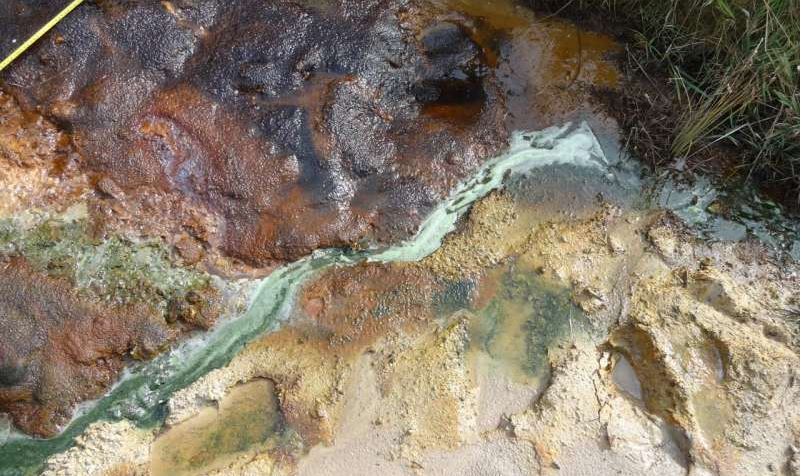According to a report issued by Imperial College London on May 15th, the scientists to search for a life on Mars, they used the British “Dorset countryside” as a research object.
By studying a small stream on the Jurassic Coast, scientists calculated how much organic matter and their distribution may have existed on Mars.
By “applying” research findings to Mars, scientists have calculated that there may be an organic matter on Mars that can fill nearly 12,000 Olympic swimming pools.
In an acidic stream in Dorset, the team discovered traces of fatty acids, a key component of biological cells.
Since the current stream in Dorset is similar to the ancient river on Mars, the discovery suggests that life existed on Mars billions of years ago.
There are many acidic streams in Dorset and there are bacteria in the stream that can survive in extreme environments.

The environment of St. Oswald Bay is similar to the environment of Mars billions of years ago. Researchers at the Imperial College of Technology at London University used St. Oswald Bay as a template for Mars to study nearby rock sediments.
Iron-rich minerals are converted into hematite – very common on Mars, making Mars appear red.
Scientists say that if iron-rich ore deposits contain traces of life on Earth, they may also have past traces of microbes on Mars.
Jonathan Tan, the co-author of the paper, stated that “St. Oswald Bay is a modern miniature of middle-aged Mars. As acid rivers dry up, goethite retains fatty acids that are biometric.”
Their study found that goethite in St. Oswald Bay contains many microbes and remains of microbes that have become fossilized.
Researchers “apply” the findings to the Mars environment. According to the number of rocks in the acidic environment of Mars, and assuming that the concentration of fatty acids in the Martian sediments is equivalent to the concentration of fatty acids on Earth, the mass of fatty acids preserved in Mars rocks may be as high as 28.6 million tons.
So much fatty acid fills nearly 12,000 Olympic swimming pools.
Before the task of finding traces of life, the heating method was used to investigate the presence of organic matter in the rock.
Scientists suspect that heating may cause minerals to react with any organic matter, explaining why we have yet to find traces of life.
But heating goethite or hematite does not destroy any organic matter in them, which means that these minerals may be the ideal target for finding traces of life.
“The existence of water on Mars billions of years ago means that it may have some form of life,” said Mark Sephton, a co-author of the paper and a professor at Imperial College. “If there was water on the planet before Mars, it would have existed.” Life, currently Martian rocks should preserve their remains, but we have yet to find convincing organic evidence that can prove that Mars had existed before. Now, when we look for signs of life on Mars, we should refer to Dosa. Special county research results.”
The researchers said that if traces of life can be found on Mars, it should be a certain kind of bacteria that can survive in extreme environments. They hope that the Mars 2020 mission will search for traces of fatty acids in dried rivers and sediments
Related Posts
Top 7 gadget gift ideas for your brother this Raksha Bandhan
Women Leadership: Challenges and Solutions
Flaunt your charm this Wedding season with these grooming products
Mars may have an underground life and Oxygen
Cygnett Park Asia Announces Opening of ‘Cygnett Pavillion’ restaurant &‘Reputations’ café lounge in Jammu
How much sleep should you take in a day for a healthy lifestyle?